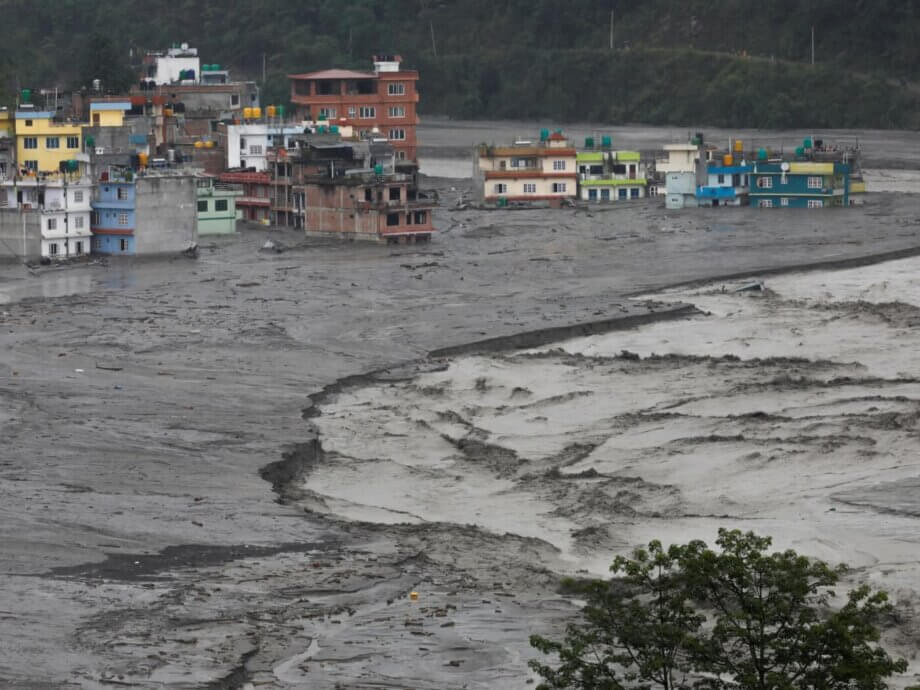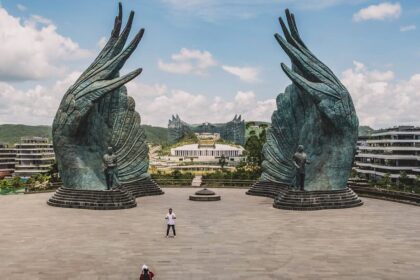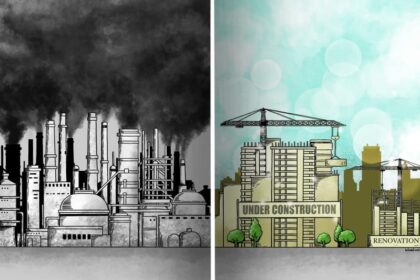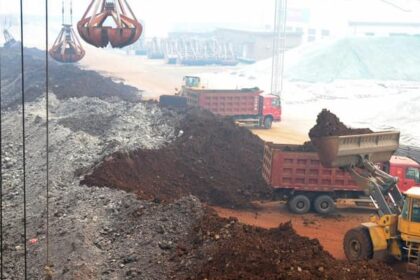Bhutan’s Monsoon Road Hazards: A Growing Challenge
Every year, as the monsoon rains sweep across Bhutan from July to September, the country’s fragile road network faces a familiar and formidable threat. Landslides, flash floods, falling rocks, and debris flows become regular occurrences, particularly in the geologically vulnerable southern regions. These hazards not only disrupt travel and commerce but also pose significant risks to public safety and the nation’s economic lifelines.
- Bhutan’s Monsoon Road Hazards: A Growing Challenge
- How Does Bhutan Prepare for Monsoon Road Emergencies?
- Innovations and Investments: Strengthening Infrastructure
- Real-Time Communication: Keeping the Public Informed
- Measuring Impact: Are Bhutan’s Strategies Working?
- Road Safety: Beyond Infrastructure
- Climate Change: The Looming Threat
- Voices from the Frontlines
- In Summary
With climate change intensifying rainfall patterns and increasing the frequency of extreme weather events, Bhutan’s Ministry of Infrastructure and Transport (MoIT) and its Department of Surface Transport (DoST) have been forced to adapt and innovate. The government’s response to these challenges has become a critical focus, as highlighted in recent press briefings and official reports.
How Does Bhutan Prepare for Monsoon Road Emergencies?
Bhutan’s approach to monsoon road hazard management is a blend of proactive planning, rapid response, and continuous adaptation. The DoST is responsible for maintaining over 4,650 kilometers of roads and 366 bridges, including primary and secondary national highways and dzongkhag (district) roads. This vast network is the backbone of the country’s connectivity, making its protection a top priority.
Preparation begins well before the first rains fall. Heavy machinery such as wheel excavators and payloaders are strategically stationed at high-risk locations known for repeated weather-related impacts. These machines are essential for the quick clearance of landslides and other blockages, minimizing disruptions to traffic and ensuring that vital routes remain open.
Field engineers are on alert around the clock during the monsoon and snowfall seasons. They maintain close contact with local machine owners, enabling a swift response to emergencies even in remote areas. Regional Offices (ROs) play a key role in detecting and responding to disruptions, coordinating closely with the central office in Thimphu. Roadblocks are identified through field patrols, reports from local subdivisions, and alerts from police or local governments.
Once a roadblock is verified, damage assessments are carried out, and the necessary machinery is deployed. While delays can occur due to the logistical challenges of reaching remote sites, the system is designed for maximum efficiency and responsiveness.
Innovations and Investments: Strengthening Infrastructure
Recognizing the increasing severity of monsoon impacts, the Bhutanese government has significantly ramped up its investments in road maintenance and emergency response. Between fiscal years 2020–2021 and 2023–2024, the annual budget for monsoon restoration stood at Nu 187 million. For the 2024–2025 fiscal year, this figure has nearly doubled to Nu 350 million, reflecting the urgency and scale of the interventions required.
These funds are used not only for immediate response but also for long-term resilience. The government is actively exploring new technologies to stabilize landslide-prone areas, seeking both technical and financial support from external partners. Post-monsoon, geotechnical and structural engineers conduct thorough inspections of affected roads and bridges, recommending repairs and mitigation measures that are prioritized by urgency. Implementation is closely supervised, with digital documentation ensuring quality and accountability.
One of the key debates within the DoST is the cost-effectiveness of maintaining standby machinery (which incurs idle charges) versus hiring equipment only when needed. The ministry is reviewing these operational approaches to balance financial prudence with the need for rapid emergency response, especially as climate change increases the unpredictability of weather events.
Real-Time Communication: Keeping the Public Informed
Public communication is a cornerstone of Bhutan’s monsoon road hazard strategy. The Bhutan RoadWatch mobile app provides real-time updates on road conditions and blockages, allowing travelers to plan their journeys safely. The DoST’s official Facebook page posts detailed roadblock information and clearance status twice daily, at 8:30 AM and 6:30 PM, along with annual summaries for transparency and record-keeping.
This commitment to timely information helps reduce the risks associated with sudden road closures and ensures that the public remains aware of evolving hazards. It also fosters a culture of preparedness, encouraging drivers to exercise caution and follow official guidance during the monsoon season.
Measuring Impact: Are Bhutan’s Strategies Working?
Recent data suggests that Bhutan’s efforts are yielding positive results. Over the past five fiscal years, the number of roadblock incidents during the monsoon has shown a general decline:
- 2021–2022: 649 roadblocks (147 major, 502 minor)
- 2022–2023: 480 roadblocks
- 2023–2024: 343 roadblocks (56 major, 287 minor)
- As of early June 2025: 282 roadblocks (39 major, 243 minor)
Roadblocks are classified as major if clearing takes over an hour, and minor if resolved within 30 to 60 minutes. The ability to clear most blockages quickly is a testament to the effectiveness of pre-positioned machinery and rapid response protocols.
Regional offices are authorized to hire private machinery during emergencies, with financial support from annual emergency funds. According to MoIT, no funding shortfalls have been reported, ensuring that resources are available when needed most.
Road Safety: Beyond Infrastructure
While infrastructure improvements are vital, road safety also depends on human behavior. The Bhutan Construction and Transport Authority (BCTA) has intensified its efforts to promote safe driving practices, especially during the hazardous monsoon months. Between January 2024 and May 27, 2025, BCTA conducted 17 road safety campaigns, reaching over 5,000 individuals. These programs emphasize the dangers of drunk driving, speeding, and distracted driving, particularly the use of mobile devices behind the wheel.
During the same period, 629 passenger bus drivers and conductors were certified in safety protocols, further enhancing the safety of public transport. Despite these initiatives, traffic data for May 2025 reveals persistent challenges: 123 motor vehicle accidents were reported across the 20 dzongkhags, resulting in six deaths and 74 injuries. Thimphu recorded the highest number of incidents, followed by Sarpang and Mongar.
Drunk driving remains the leading cause of accidents, accounting for 28 cases in May 2025. Other contributing factors include failure to maintain vehicle control, tailgating, and unsafe overtaking. While only a handful of accidents are directly linked to weather-related causes such as landslides or heavy rain, these hazards significantly increase the overall risk on the roads during the monsoon.
Climate Change: The Looming Threat
Bhutan’s monsoon road hazard management strategies are being tested by the growing impacts of climate change. More intense and frequent rainfall events are causing greater damage to infrastructure and increasing the unpredictability of hazards. The government’s commitment to improving road resilience, emergency preparedness, and public awareness reflects a determined effort to adapt to these new realities.
Experts warn that continued investment in both preventive and reactive measures will be essential. This includes not only strengthening physical infrastructure but also enhancing early warning systems, expanding public education campaigns, and fostering regional cooperation for technical and financial support.
Voices from the Frontlines
Namgyal Dorji, Minister for Industry, Commerce and Employment, has been at the forefront of communicating the government’s strategies. He emphasizes the importance of both immediate response and long-term prevention:
“Since most road emergencies are unexpected, we have stationed machines at all critical sites where road stretches are prone to repeated weather-related impacts. Our field engineers remain on alert around the clock during monsoon and snowfall seasons. They also maintain contact with nearby machine owners to respond promptly to any emergencies that may arise.”
Officials from the DoST echo this commitment, highlighting the need for continuous innovation and adaptation as climate risks evolve.
In Summary
- Bhutan faces significant road hazards during the monsoon season, including landslides, floods, and debris flows, especially in the south.
- The government’s response includes pre-positioning heavy machinery, round-the-clock field engineers, and real-time public communication via apps and social media.
- Budget allocations for monsoon road restoration have nearly doubled in recent years, reflecting the urgency of the challenge.
- Roadblock incidents have declined, indicating the effectiveness of current strategies, though challenges remain in remote areas.
- Road safety campaigns and driver certification programs aim to reduce accidents, with drunk driving and driver negligence as leading causes.
- Climate change is increasing the frequency and severity of monsoon hazards, requiring ongoing adaptation and investment.
- Bhutan’s approach balances rapid emergency response with long-term infrastructure resilience and public awareness.












